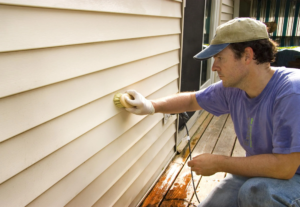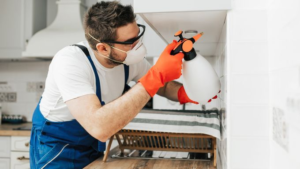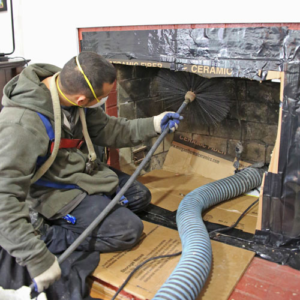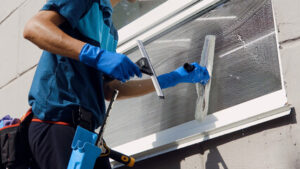The exterior of your home says a lot about you and your style. It’s also the first impression visitors and passersby have of your home.
Vinyl is one of the most popular siding options available to homeowners today. It’s affordable and requires minimal maintenance.

It also doesn’t require painting. That saves you the cost and hassle of a painting project.
Durability
As homeowners, we all have much to keep up with: cleaning, mowing the lawn, dusting, painting, staining, etc. So, the last thing we want to add to our list of chores is a product for the exterior of our home that requires constant upkeep. Fortunately, vinyl siding doesn’t need a lot of effort to keep looking great. It’s made from a specialized form of plastic that doesn’t rot, corrode, or attract termites, and it’s also resistant to moisture.
Another great benefit of vinyl is its insulating ability, which helps reduce utility costs during the summer and winter. The material prevents heat loss that occurs when wall studs touch the outside of your house, a process called thermal bridging. This insulation helps your HVAC and other heating and cooling systems work more efficiently, and it can cut your energy bill significantly.
In addition, vinyl is a low-carbon material that does not contribute to climate change. It has a lower embodied energy than metal or wood products, and it produces significantly fewer greenhouse gases and sulfur dioxide than other materials during production.
While the durability of vinyl is one of its best qualities, it does have some drawbacks that are important to consider before choosing this type of cladding for your home. For example, the color of vinyl can fade over time, and it may not be possible to match a new panel with an existing one that has lost its color. Additionally, vinyl can melt when situated too close to high sources of heat such as a grill or outdoor refrigerator.
It is also important to ensure that the nails, screws, or staples used to fasten vinyl are not too tight. Using too many of these, or using the wrong type of nail, can cause the vinyl to buckle due to changes in temperature. Similarly, it’s important to trim any branches or shrubs that come into contact with the vinyl and could scrape against it in the wind. A little maintenance can help keep your vinyl siding looking great for years to come!
Aesthetics
Vinyl siding is popular for its affordability and durability, but it is also a very attractive material. This makes it an ideal choice for homeowners who want to boost the value of their home and increase its curb appeal. Vinyl comes in a range of colors and can be matched with vinyl trim pieces. It is also durable and resists fading from sun exposure. It can be installed over other materials, including wood, and is resistant to hail damage and scratching.
The look of vinyl has improved significantly over the years. Advances in technology have eliminated the seams that are visible on older vinyl and now it is virtually seamless. It has a smooth surface that can be painted any color and is available in different textures. Some are designed to imitate the look of wood grain shakes and other finishes to complement traditional homes. Others are crafted with modern textures and styles to complement more contemporary designs.
Another advantage of vinyl is that it does not need to be repainted as often as other siding options, such as wood or low-maintenance Hardie board. The only times that vinyl does need to be repainted are when it is damaged or if the homeowner would like a change in color. When it is time for a repaint, vinyl can be cleaned and repainted with vinyl-safe paint that won’t damage the material. This is a much more eco-friendly option than painting wood or other types of siding because it reduces the amount of toxic chemicals that are released into the environment.
A potential downside of vinyl is that it can mask problems on the home’s exterior. It is important to ensure that any leaks, moisture condensation issues and structural defects are addressed before installing vinyl siding to avoid future problems. It is also not recommended for historic neighborhoods because it can make a house look flat and lacking in character.
If you are considering installing vinyl siding, make sure to contact a reliable contractor who has experience with this type of project and can install the highest quality Harrisburg PA, Lancaster PA and Lebanon PA has to offer. They should be able to help you find the best color, texture and style that fits your needs and budget.
Energy Efficiency
Vinyl siding is a great way to save energy costs, and it can also increase the value of your home. Insulated vinyl siding acts as a barrier between your house and the outdoors, which helps to keep your home warm in winter and cool in summer. This can significantly reduce your energy bills by lowering the amount of work that your heating and cooling systems have to do.
The insulated vinyl siding that we use is manufactured by using recycled materials, which is good for the environment. It also contains a water-resistive barrier that prevents incidental moisture from infiltrating your home. This is especially important around windows, doors, and other openings where air may enter or escape.
It is also easy to install and requires minimal maintenance. While a lot of exterior cladding options need constant care, such as repainting and caulking, vinyl only needs to be rinsed down with a hose and mild detergent from time to time. This is one of the biggest reasons why homeowners choose this type of siding.
Another benefit of insulated vinyl is its ability to stand up to strong winds. This is a huge factor for many homeowners who live in windy areas. Vinyl is made from a specialized type of plastic, and it does not decay or rot when exposed to the elements. This means that you can expect it to continue to perform well for decades, even if you live in an area with harsh weather conditions.
While insulated vinyl can help to lower your energy costs, it is not the only option for improving your home’s insulating capabilities. There are other products available on the market, such as brick and stone, that can give your home a more modern look and increase its insulating power. However, these options come at a premium in terms of price and installation. In addition, they do not offer the same longevity as insulated vinyl siding. Ensure that you speak to your contractor about the different options available to you and make sure that you are choosing the best product for your home.
Maintenance
Vinyl siding is renowned for its durability and lifespan in comparison to other exterior cladding materials. With proper installation, it can last well over 50 years with little to no need for repainting or other chemical-based treatments. It is resistant to mold, fungus, and rotting, and does not require regular painting or staining. It is also a highly durable material that can stand up to the elements well, including rain and wind.
It is not immune to fading due to UV exposure, however. Fading tends to occur more gradually than with other types of cladding, and is often not noticeable. It also tends to become brittle as it ages, which can lead to cracked and broken panels. This is a minor issue and is easy to remedy, but it can make some homeowners shy away from the material.
While many people still believe that vinyl looks cheap, plastic or fake, it has come a long way in the industry, and is available in a wide range of styles to mimic other materials. It is also a highly versatile product that can be used to create a number of different looks for homes. It can be found in lap siding, vertical siding and even shakes.
Insulated vinyl is a good choice for energy efficiency as it offers superior protection against heat loss. Its thick material helps to trap air and keep the house warm in the winter and cooler in the summer, which can save a homeowner money on utility bills.
In addition, vinyl is more flexible than other types of cladding. This flexibility means that it can expand and contract more easily with temperature changes. This can help to prevent gaps and cracks that can cause utilities to work overtime.
When installing insulated vinyl, it is important to account for this flexibility when measuring and cutting the material. This is especially important when overlapping panels. When cutting, it is recommended that a minimum of 1/4-inch be left on both sides to ensure the material will be able to stretch and move with temperature changes.








